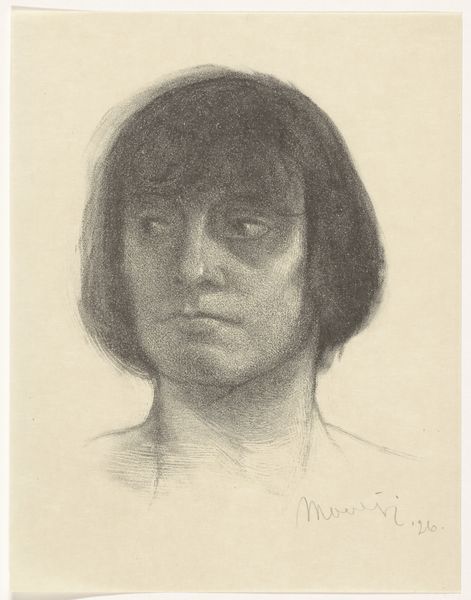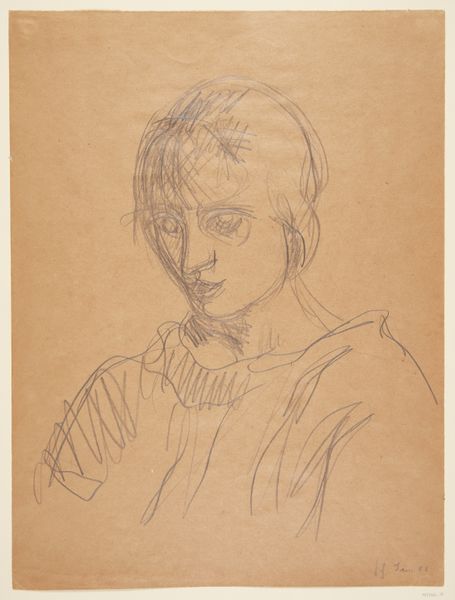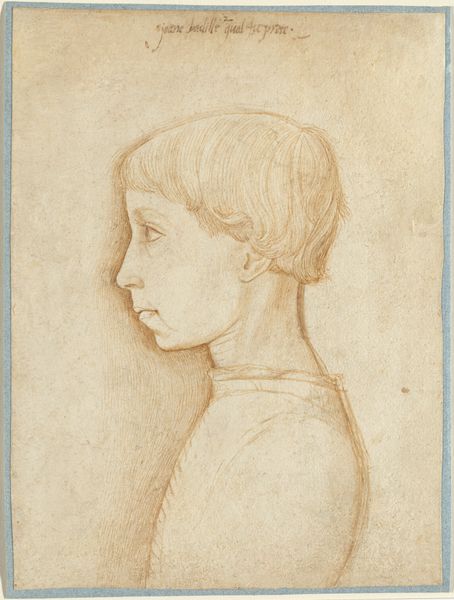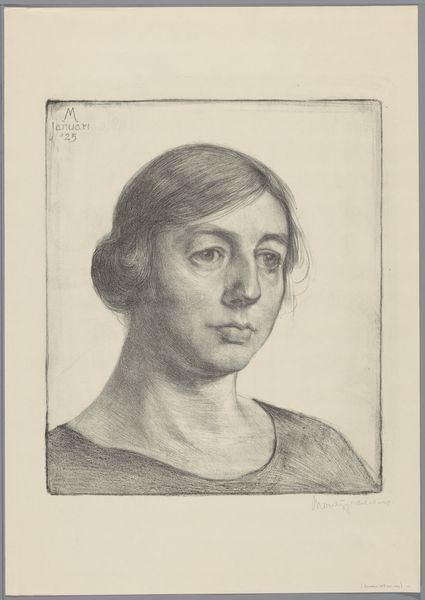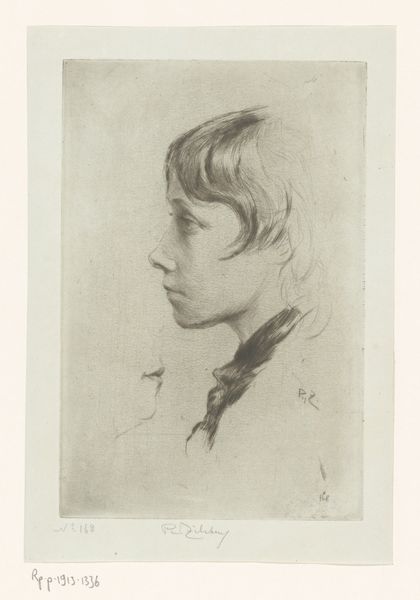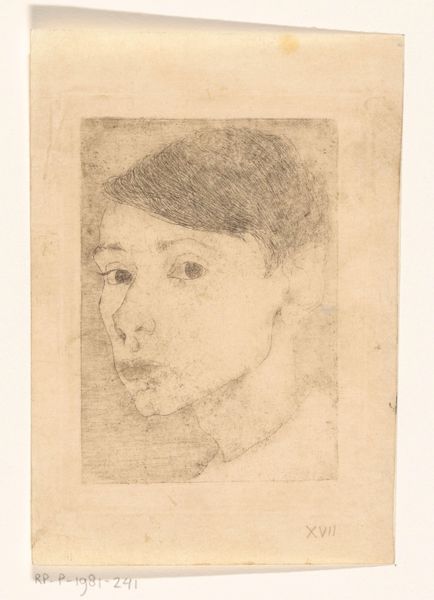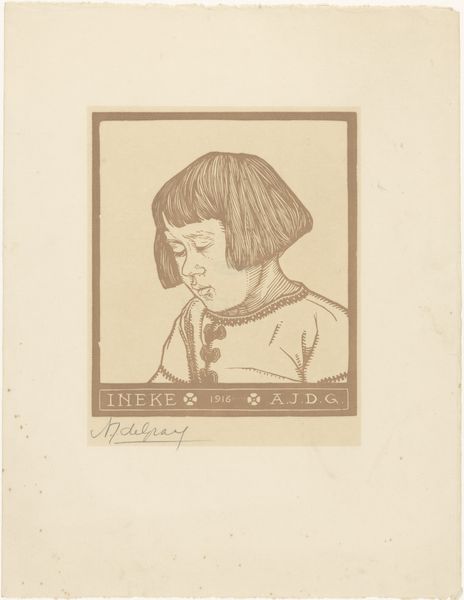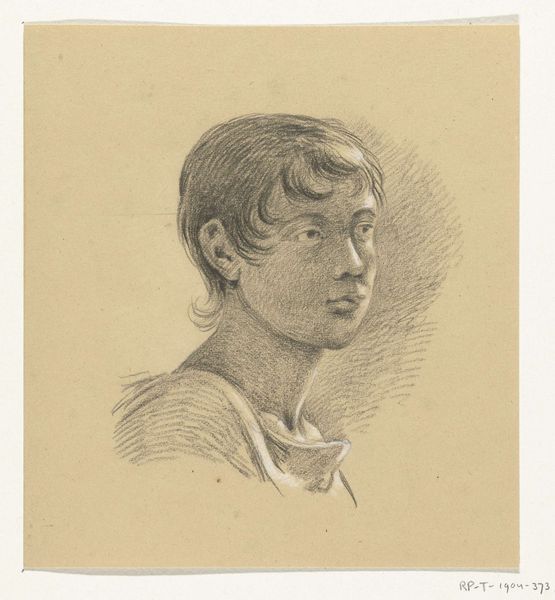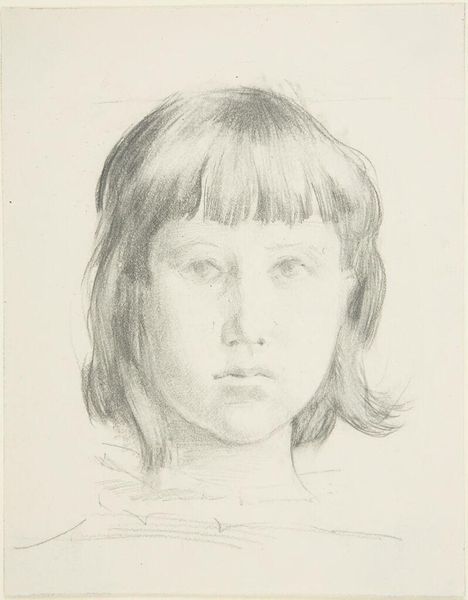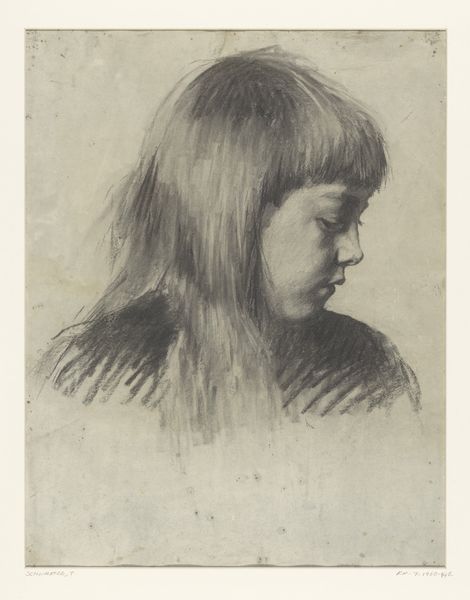
drawing, paper, pencil
#
portrait
#
drawing
#
caricature
#
paper
#
pencil drawing
#
pencil
#
portrait drawing
#
realism
Dimensions: height 142 mm, width 120 mm
Copyright: Rijks Museum: Open Domain
Curator: Here we see Han van der Kop's "Fotoreproductie van een portret van Mida," made sometime between 1933 and 1960 using pencil on paper. Editor: The drawing exudes a delicate stillness. The muted tones and careful linework evoke a profound sense of melancholy, as if the subject carries a weight beyond her years. Curator: Indeed, portraiture often carries the weight of capturing not just likeness, but also the sitter's perceived inner state and place in the world, especially concerning social class. Editor: I'm particularly drawn to the subtle gradations achieved with the pencil. The way van der Kop builds up the shadows around the eyes and along the jawline, you can see a life here. I wonder what kind of pencils he might have used to reach these tones. Curator: Consider too the bob haircut and dress of Mida in conjunction with the inscription which tells us the work was sketched in September of 1933; we can deduce, I think, something about both sitter and artist—that Mida represents the modern girl in interwar Europe, the cutting edge. Van der Kop, like so many, captured those fraught years between two wars. Editor: Looking at the texture of the paper, it seems as if a standard, commercially-made material. Does the paper choice point to considerations around the accessibility and affordability of art during that period? Was he working on commission or sketching from a photograph? Curator: That tension between capturing an ideal while grappling with economic constraints resonates profoundly. He’s trying to immortalize youth through both traditional portraiture, realism even, but within the trappings of a certain kind of mass media production...it hints at larger social trends. Editor: And that tension infuses the portrait itself. The somberness almost contradicts the newness or modern "youth" you speak of; she looks like an old soul in a freshly designed package, really a remarkable thing to see and sense across all these years. Curator: Absolutely. I feel that in this portrait we see art holding memory, making visual an entire mood and aesthetic approach of those decades. Editor: For me, it’s an intriguing example of how the humble pencil and paper could become a conduit to evoke so many lives, lost and remembered.
Comments
No comments
Be the first to comment and join the conversation on the ultimate creative platform.

